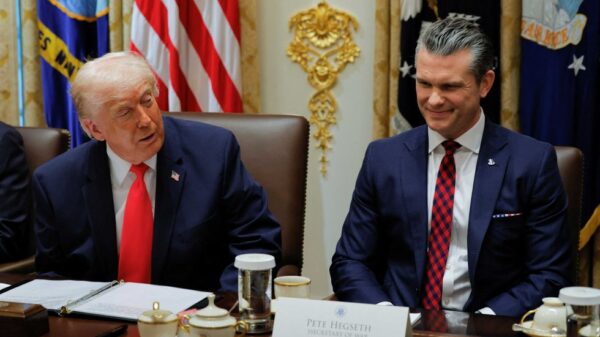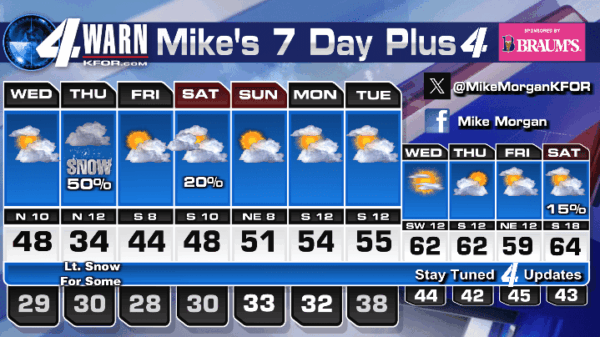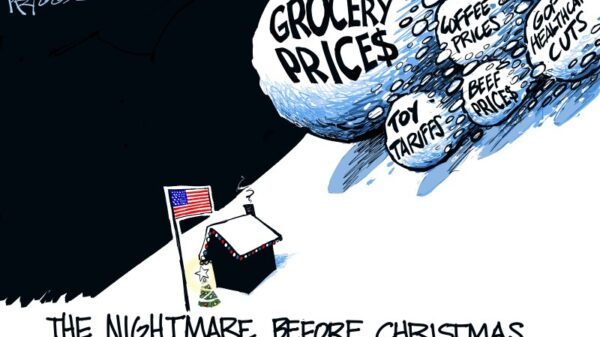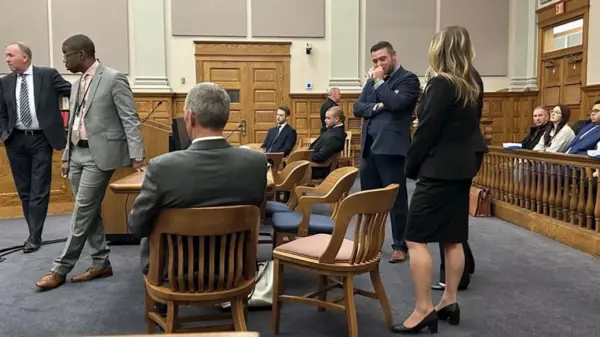In the past week, President Donald Trump has publicly addressed the concerns raised by the “No Kings” protests that swept across the United States. On two occasions, he asserted, “I’m not a king,” during interviews and interactions with reporters. His statements were made in response to growing apprehension about the concentration of power in the presidency, particularly as protests highlighted fears of democratic erosion in the country. Despite these serious discussions, a provocative AI-generated video shared by Trump has drawn considerable attention, overshadowing the more pressing dialogue.
The video, posted on July 7, 2023, features Trump wearing a crown while humorously depicted as dumping a substance resembling waste on protesters from a plane labeled “King Trump.” This post was created by a social media user known as “Xerias,” whose watermark is visible on the video. The incident has reignited criticism from Trump’s opponents while eliciting amusement or indifference among his supporters.
In the wake of the protests, which aimed to express discontent with governmental overreach, many Americans are left bewildered by the president’s choice of satire. The protests, marked by slogans such as “No crowns, No kings,” reflect deep-seated concerns that democratic norms are under threat. While some citizens view Trump’s military and immigration policies as necessary measures for law and order, others perceive them as troubling intrusions into local governance.
The sentiment around the protests was articulated by David Brooks in a recent essay for The Atlantic, where he stated, “America may sink into autocracy for decades” without a significant movement for change.
Satire and Its Implications
In defending the controversial video, U.S. Speaker Mike Johnson argued that Trump was not advocating violence against his political adversaries, despite the presence of some alarming imagery among protest signage. He referenced a protester displaying a sign with a crosshairs graphic over Trump’s face, calling attention to the violent rhetoric that has surfaced at these events. The “No Kings” movement has emphasized a commitment to nonviolent action, and many protests were characterized by a festive atmosphere, as highlighted by reports of inflatable costumes and playful signs aimed at diffusing tension.
Despite the overall peaceful vibe, some protest messages drew direct comparisons of Trump to dictators, raising concerns about the impact of such rhetoric. Johnson’s comments pointed out the incongruity between the president’s lighthearted satire and the serious nature of the protests, indicating a potential misunderstanding of the underlying issues.
Trump’s use of satire is not a new phenomenon; since late 2022, he has shared over sixty AI-generated images and videos on his social media platform. Critics argue that this approach distracts from the serious discussions necessary for addressing the fears and frustrations of American citizens.
Historical Context of Satire in Politics
The use of satire as a political tool has deep historical roots, often employed to critique authority. Ancient cultures, including those of Egypt and Mesopotamia, utilized mockery to challenge social norms and governance. In modern times, satirical figures like Thomas Nast and programs such as “The Daily Show” have highlighted corruption and hypocrisy in political systems through humor.
Trump himself has become a target of similar satire, with various creative expressions mocking his presidency. The recent protests incorporated elements of humor to challenge authority, including signs that cleverly juxtaposed levity with serious political commentary.
As the political landscape continues to evolve, questions remain about the effectiveness of using satire and ridicule as a means of communication. While some assert that such strategies can engage audiences and provoke discussion, others caution that they may exacerbate divisions and undermine empathy among the populace.
Psychologist R.J. Starr raises a crucial question regarding the societal implications of habitual mockery, suggesting it may lead to a decline in emotional intelligence and an increase in societal fragmentation.
In an era marked by civic unrest and political polarization, understanding the impact of satire on public discourse and its potential to either unite or divide is more important than ever. The challenge remains: how to address legitimate concerns while fostering a dialogue that brings people together rather than driving them further apart.






































































